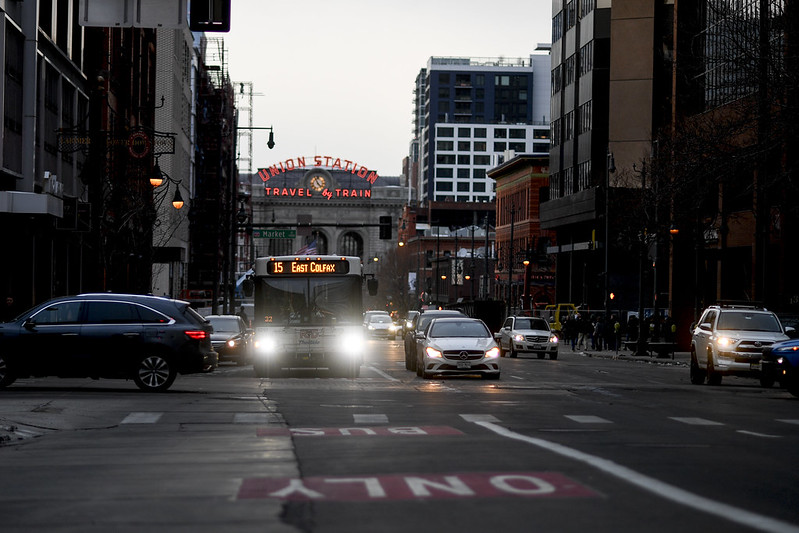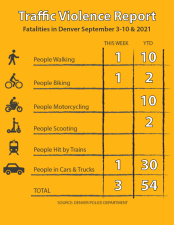Back on Track: Can this Election Save the RTD Board of Directors?

On November 3, Colorado voters will be tasked with electing seven new members for the RTD Board of Directors. The 15-member board represents different districts along the Front Range and each holds their seat for a four-year term.
The Board of Directors is responsible for voting on topics including:
- passing the annual budget
- overseeing service changes, including both cuts and increases, as well as other adjustments
- setting fares
- and making decisions around the development of rail stations.
They also create and approve policies, select and evaluate the performance of the General Manager and elect officers each year to serve on the Executive Committee. The board sits below the general manager and CEO, providing governance for the agency while representing the voters, residents and transit riders of their district.
Although the job is part-time and only requires members to meet roughly 60 times throughout the year, the board has faced higher levels of responsibility in the wake of the coronavirus pandemic and RTD’s budget crisis. Ridership fell 70% in March when the pandemic first hit Colorado and is currently down 40% of normal levels. As a result, service across the agency has been reduced by nearly 40%.
Recently, the board has made decisions like voting down a proposal to defund RTD’s security contracts, which would have redirected the money to mental health professionals and homelessness outreach workers. They have also endorsed salary cuts to management as a way to address the $215 million deficit in the agency’s budget. These cuts would reduce the salaries of employees who earn more than $60,000 per year and reduce the possibility of layoffs.
With RTD servicing eight counties in the state, hundreds of thousands of riders rely on the agency’s services for everyday essential trips. According to a report from Transit Center, the agency’s 40% in service cuts would impact 95,793 riders and 39,535 job holders who would lose access to frequent full-day access. This includes 6,486 households who do not have access to a vehicle and rely on public transportation to go to work, get groceries, get to medical appointments, and more. The loss of these bus and light rail services could impact the types of jobs that people hold, the expansion of new business and the health of communities living closest to highways and interstates.
In recent months, the Board of Directors has come under especially close examination from the public. In January of this year, Sen. Jack Tate, R-Centennial, proposed a bill that would add two governor-appointed members to the Board of Directors, each of whom would represent disinvested communities and riders with disabilities. Tate has claimed that these changes to the board would help address the service cuts that came as a result of a shortage of bus and light rail operators by increasing fiscal oversight and calling for higher transparency from RTD.
“RTD needs a turn-around, not a Band-Aid, right now,” said Tate, according to the Post. “If they get their fiscal house in order, they will not have to be making these cuts in the future.” However, many board members don’t agree that Tate’s bill is the solution to RTD’s financial problems. Bob Broom, a current member of the board, told the Post: “More board members is not the answer – it’s hard enough to gain consensus now.”
On October 9, journalist and previous Streetsblog Denver editor, Andy Bosselman took to the Denver Post to call for RTD to disband their Board of Directors and install an appointed board. “The legislature should set a minimum number of members to represent equity, minority and disabled communities,” Bosselman wrote. “A handful should bring expertise around transportation, urban planning or finance.” Public transportation in the Denver-Metro area could cut traffic congestion and air pollution while serving its residents but Bosselman argues that the elected board of directors was set up to fail from the start with its initiation in 1984. RTD needs to focus on serving the riders that depend on public transportation the most, instead of equally distributing power throughout the geography of its 15 districts.
Map of the RTD Board districts. Image credit: https://www.rtd-denver.com/board-district-map
RTD is unique from other transportation agencies in the fact that the board is elected by the public and not appointed. Elections alternate so eight seats are open in one general election and seven in the next. This year is an especially important year for voters to make their vote count and determine who the best candidate is to represent them and address their transit concerns. Voters can learn more about the candidates running for each district by visiting the candidates websites or reading more here.
Below are the districts up for election this year and the candidates for running for each district*:
- District A
- District D
- District E
- District F
- Bob Broom (i)
- District G
- District H
- District M
The eighth seat in District I, which consists of the eastern part of Boulder County, is empty with no candidates able to get enough signatures to make the ballot. State law requires the county with the highest number of eligible electors within the district fill a vacancy by appointment. RTD has requested that the Boulder County Board of County Commissioners (BOCC) choose the next director for this seat.
Going forward, the board will need to address issues like how to deal with the deficit and increase revenue, meet the needs of current riders and increase ridership, and determine how to deal with line cuts and plans for new lines. RTD is facing a $215 million shortfall in 2021 and planning hundreds of layoffs across the agency. With pressure to focus on transit-dependent riders and keeping operators employed, the board has a lot of pressure from residents, riders and local officials to get RTD back on track.
*Note: (i) signifies an incumbent candidate
Better walking. Better biking. Better transit. Support the nonprofit mission of Streetsblog Denver. Give $5 per month.



